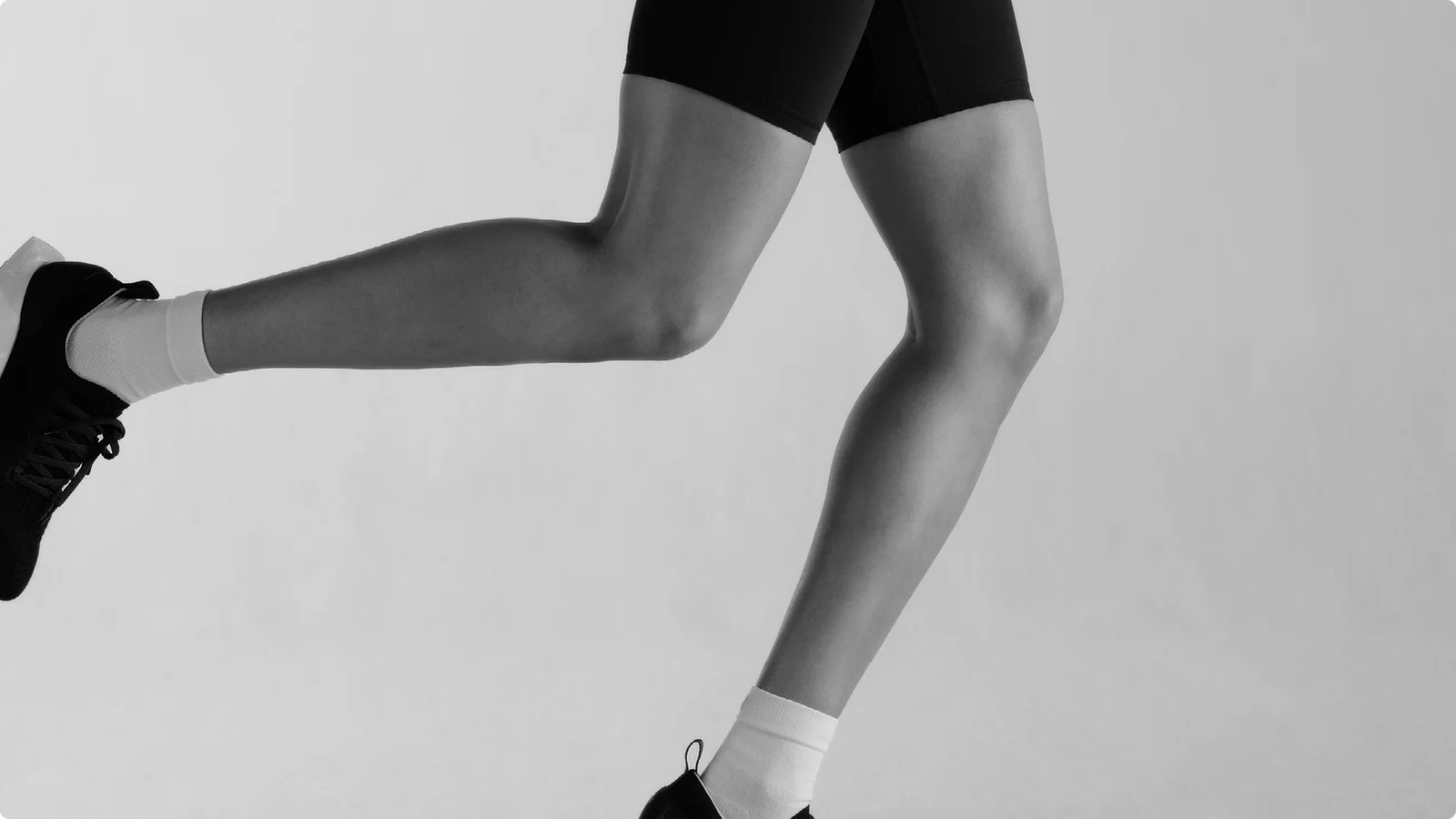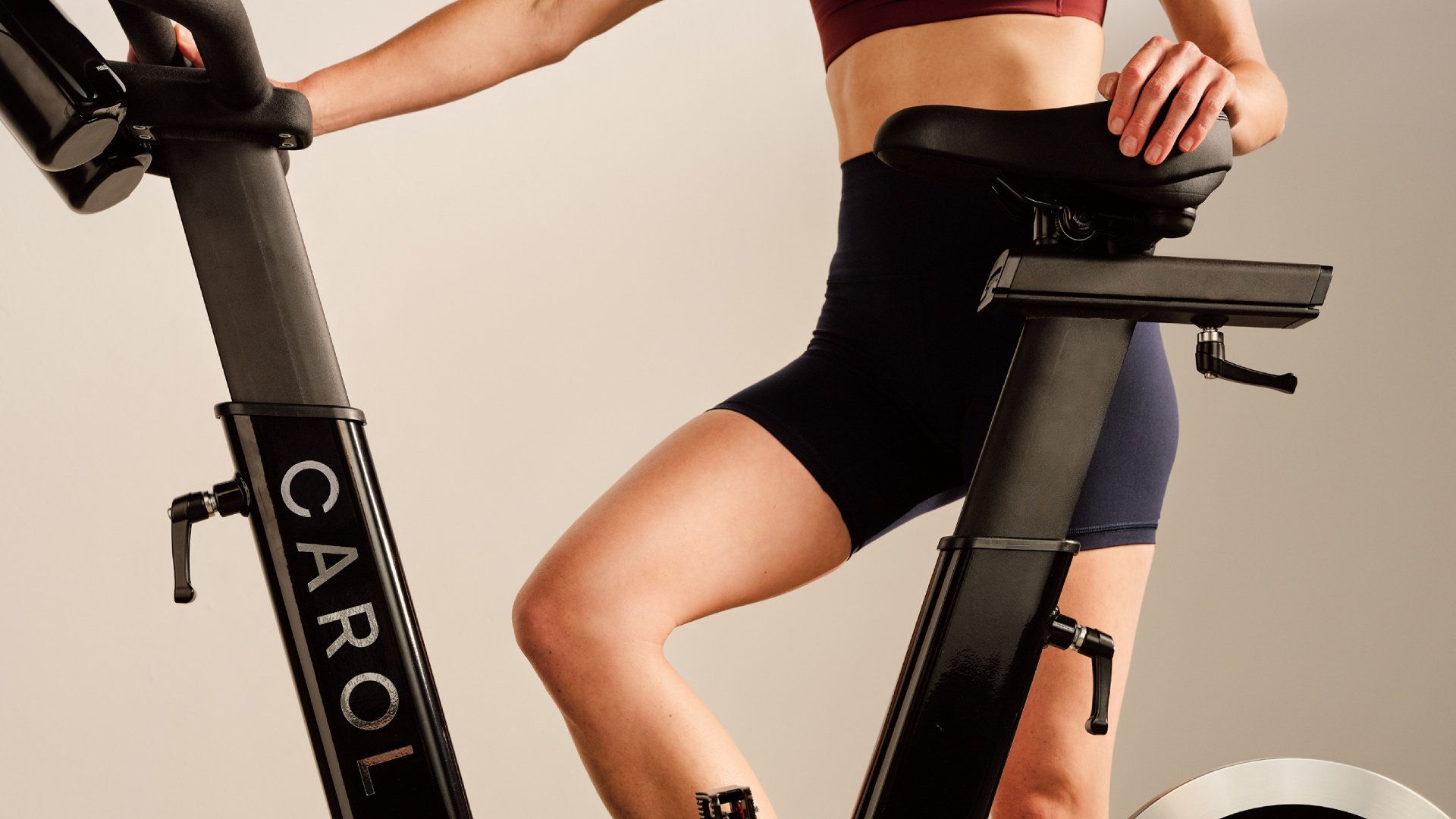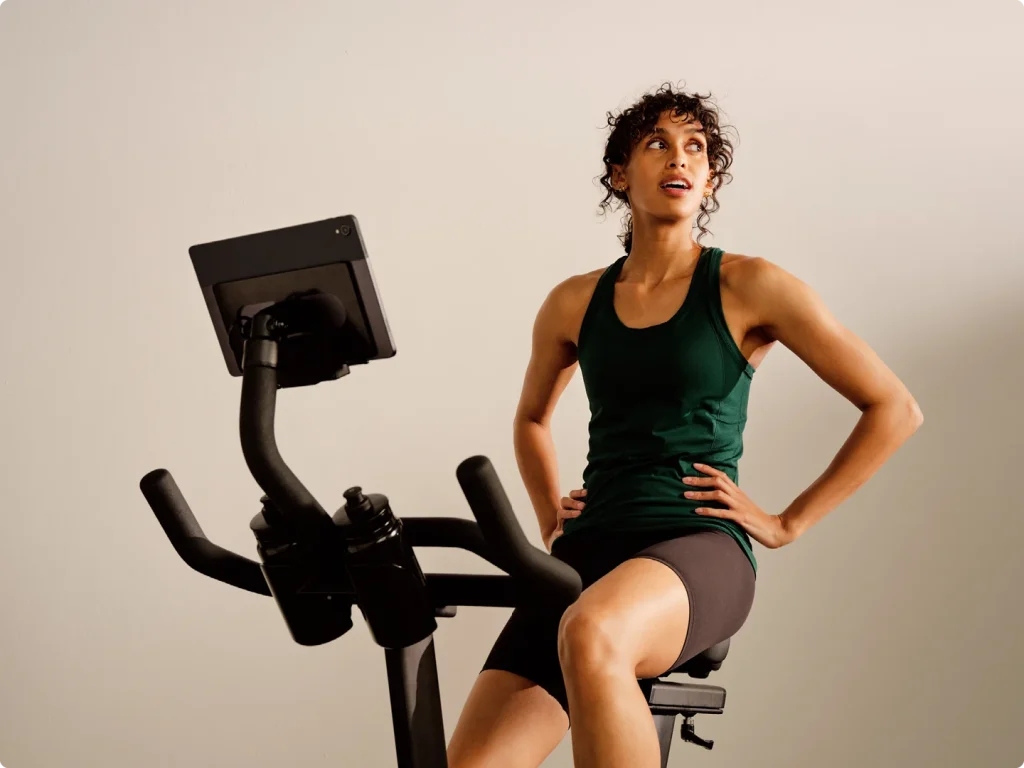Cycling engages all major muscle groups in the legs, core, and upper body, generating power for pedal strokes with the lower body. The core and upper body play a vital role in maintaining balance and posture. Understanding the muscle group combinations used in cycling enables you to enhance warmups, incorporate targeted exercises into your strength training, and prevent overuse injuries.
Muscle groups used in cycling
Lower body muscles
Leg muscles are used most intensely in cycling. A complex activation of different muscle groups drives the power production needed for the pedal stroke. Quads and glutes are the primary power producers while hamstrings and calves stabilize the movement. Hamstrings help with knee stability while calves ensure ankle stability.
During the pedal stroke, various muscle groups come into play. The quadriceps, a group of 4 thigh muscles, engage from the top to the bottom, generating maximum power. Between 6 o’clock and 9 o’clock, the hamstrings play a role in knee stability during the pulling motion. Additionally, the calves work in tandem with the hamstrings to provide an extra push at the top of the pedal stroke.
The glute muscles are crucial in the first phase of the pedal stroke, providing approximately one-third of the power. They not only extend the hip but also play a vital role in proper cycling technique by stabilizing the hips, regulating thigh rotation, and reducing pressure on the knees. Inactive glutes can lead to knee issues. When the glutes are underutilized, the task of knee stabilization is taken on by the quads and hamstrings, potentially leading to fatigue and injuries. To enhance glute activation, try rotating your pelvis towards the handlebars while riding.
Core muscles
As you gain speed with the help of your leg muscles, you need a stable platform to efficiently deliver that force. That’s where your core and upper body muscle groups come into play as you balance over the 3 contact points on the bike. When cycling, you use both front and back core stabilizers—abdominals and erector spinae. Core strength is needed to transfer force through the legs to the pedals. A strong core also means you have less weight on your hands and wrists which makes cycling more comfortable for long durations.
Upper body muscle groups
When it comes to the upper body, cyclists primarily engage 3 muscle groups. The triceps and pectorals provide support for the upper body weight, while the latissimus dorsi is involved in pushing and pulling the handlebars.
Cycling can create muscle imbalances due to the varying pressure on different muscle groups. To prevent this, it’s crucial to incorporate a well-rounded resistance training plan that targets all major muscle groups. Include lower-body exercises like lunges, leg lifts, and squats to strengthen the glute muscles. Planks with variations are effective for core strength, while exercises for the arms and abs will enhance your body’s positioning during the ride. Additionally, incorporating burpees into your routine will boost overall explosive power throughout your entire body.

Quads and glutes are the primary power producers while hamstrings and calves stabilize the movement of pedaling.
Aerobic and anaerobic energy systems
The energy you get from food is stored in your muscles in the form of adenosine triphosphate (ATP). During your workout routine, it can be converted back to energy by 1 of 3 energy systems: phosphagen, anaerobic, and aerobic.
The phosphagen system is activated first and runs on the small amount of ATP that is already stored in your muscles. Hence, it can supply energy only for the first 8-10 seconds of exercise.
The anaerobic (or glycolytic) energy system uses glycogen (sugar stored in muscles) to turn it into ATP. It works quite fast because it doesn’t have to rely on an oxygen supply and it can produce enough energy to last about 90 seconds. This energy system is used for short and intense resistance training exercises or HIIT.
The aerobic (or oxidative) energy system is activated last, within 2 minutes of exercise, when the heart and lungs start providing muscles with oxygen to set off a chemical reaction. It uses glucose that comes from the remains of glycogen, the bloodstream, and fat reserves. The aerobic system is the main source of energy for endurance moderate-intensity exercise.
Slow vs. Fast twitch fibers
All muscle groups are made up of 2 types of fibers that correspond to the 2 main energy systems. Slow-twitch fibers have low force but exceptional endurance. They use aerobic metabolism to produce force and work well for long-distance moderate-intensity rides. Conversely, fast-twitch fibers generate larger amounts of force and do it 2-3 times faster than slow-twitch fibers, but they get fatigued quickly. Fast-twitch fibers synthesize energy through the anaerobic process. This type of fiber is perfect for high-intensity sprints. Fast-twitch fibers also contribute the most to muscle growth and are activated during weight lifting and strength training.
Most people are born with half slow-twitch muscle fibers and half fast-twitch muscle fibers, however, the exact proportion also depends on genetics and training. After the age of 30, you start losing your muscle fibers, and by the age of 75–80, this loss can reach up to 50% of the lean mass, according to studies. While there are many factors that contribute to muscle mass decrease with aging, inactivity is the most important one. Fast-twitch muscle fibers are especially vulnerable to inactivity as they are only used in high-intensity exercises that are less common for the majority of people. A decrease in these fibers affects your strength and power, increases the risk of injury, and degrades your body composition. That’s why it’s important to include different types of exercise, to target both types of muscle fibers, in your weekly training schedule.
CAROL Bike’s signature REHIT training program is a maximum-intensity exercise activating the fast-twitch fibers of your lower body muscles. The maximum capacity of fast-twitch fibers is 30 seconds, so you need short high-intensity sprints in order to activate them. 2×20-second REHIT sprints make a perfect duration to train your fast-twitch fibers while giving them enough recovery in between. Anaerobic energy synthesis results in the accumulation of lactic acid in your muscles which leads to pain and discomfort if you try to use them longer than a 30-second time frame or don’t give yourself enough time to recover between sprints. It is recommended to allow at least 60 to 90 seconds of rest after each explosive sprint. In REHIT, you can customize your recovery time from 1 to 3 minutes.
Slow-twitch fibers can be trained with longer intervals (from 30 seconds to up to 3 minutes) and require less recovery time in between. You can utilize most of CAROL Bike’s Zone-based Free Rides or other custom programs to train your slow-twitch fibers.

CAROL Bike is scientifically proven to deliver superior health and fitness benefits compared to regular cardio—in 90% less time.
What injuries are the most common when cycling?
Common cycling injuries can be categorized as acute or chronic. Acute injuries occur outdoors as a result of accidents, while using a stationary bike eliminates this risk entirely.
Chronic cycling injuries are usually the result of incorrect posture, poor bicycle fit, and overuse. According to studies, the most common body parts for overuse injuries are the neck (48.8%), knee (41.7%), groin/buttock area (36.1%), hands (31.1%), and lower back (30.3%). To prevent chronic injuries, it’s crucial to ensure that your bicycle matches your height and body size, and that you maintain the correct position while cycling. Leaning too low and far back on the saddle hinders the efficient recruitment of major muscles, so it’s important to lean forward and avoid hip hyperextension.
Pain in the neck usually occurs when you stay in one riding position for too long. To alleviate this, incorporate shoulder shrugs and neck stretches into your routine to relieve tension. If the handlebars are too low, rounding your back can strain the neck, so be mindful of your position if you experience this discomfort frequently.
Knee pain is such a common problem that there’s a cyclist’s knee syndrome. In most cases, it also comes from an ill-fitting bike. Pain at the front of the knee occurs when the saddle is too low and places undue pressure on the patella (knee cap). Posterior knee pain arises when the saddle is too high, stretching the hamstring attachments. Side pains can be caused by incorrect cleat set up causing the knee to track incorrectly.
During cycling, the quadriceps and glutes bear the most pressure, while the hamstrings may remain weak and tight. This tightness can cause various forms of pain, such as back pain, knee pain, and neck pain. Insufficient hamstring flexibility can cause cyclists to round their spines, resulting in an incorrect position on the bicycle. Therefore, it’s essential to include strength training and stretching exercises that focus particularly on the hamstrings.
Lower back pain can stem from a weak core muscle group that fails to provide adequate support. Additionally, using a stem that is too long or handlebars that are too low can strain the lower back. Finally, sitting at a desk for extended periods can also contribute to the condition of the back muscles.
Cycling is an endurance sport that uses muscle groups from both the upper and lower body. To improve your training results and avoid overuse injuries, you need to include strength training and stretching in your workout routine. Make sure that you focus on all major muscle groups, especially those that aren’t actively used but are important for the correct position and technique.
Overuse injuries occur when the training impact exceeds your current level, making it crucial to gradually introduce longer durations and higher intensity. By gradually increasing your training load, you allow your body to adapt and build strength and endurance over time. This progressive approach reduces the risk of overuse injuries and promotes sustainable training progress. Remember, patience and consistency are key to achieving your fitness goals while minimizing the risk of injury.

Got a question? Let's book a call.
All our experts have MSCs in Exercise Science, and they’re here to answer your questions. Whether it’s about the science behind CAROL Bike, or general fitness advice, whatever’s on your mind—we’re here for you.


